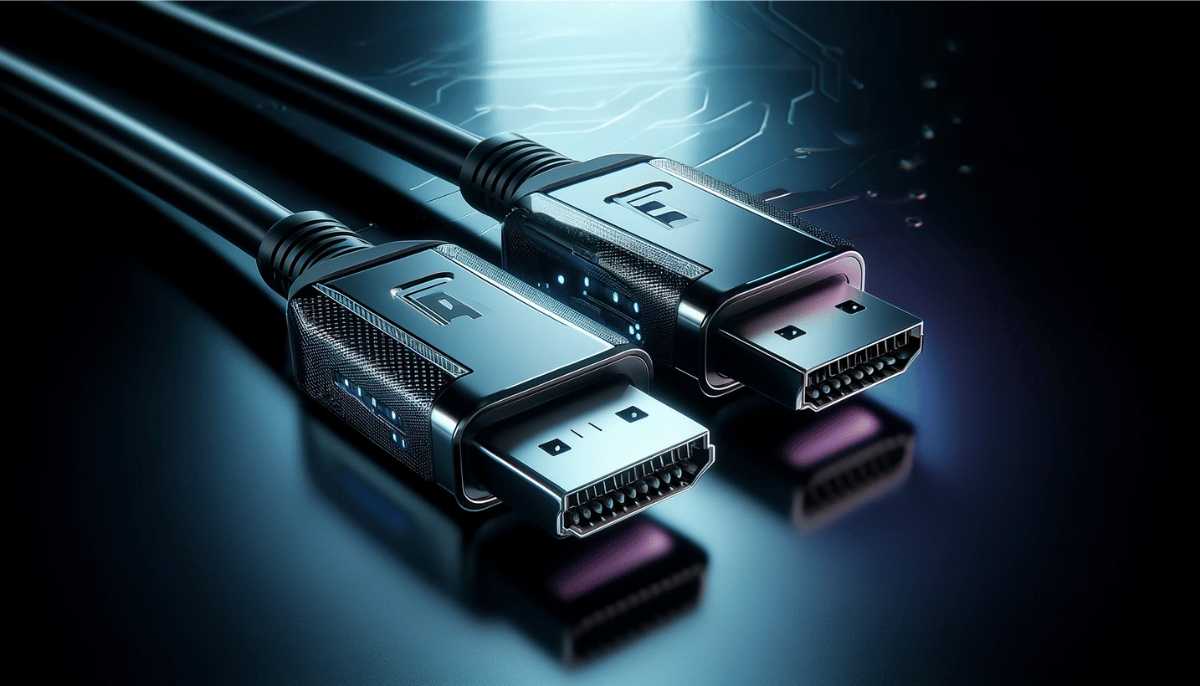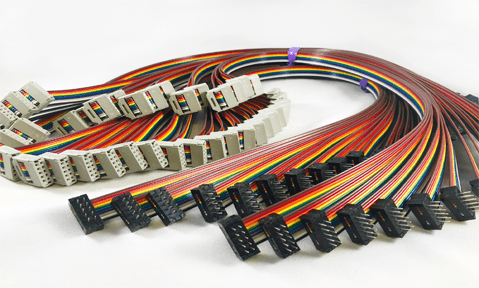Introduction
In the realm of digital displays, connectivity plays a crucial role, and DisplayPort has emerged as a key standard for linking monitors, computers, and various devices. Developed as a high-performance substitute for legacy standards such as VGA and DVI, DisplayPort provides enhanced video and audio transmission capabilities, accommodating resolutions that exceed conventional HD, higher refresh rates, and the ability to support multiple monitors through a single cable. This article delves into the history, technology, features, and applications of DisplayPort, illustrating its significance in contemporary computing and digital media environments.
1. The Development and Purpose of DisplayPort

1. The Necessity for a New Standard
By the early 2000s, the swift advancement of display technologies created a growing demand for enhanced and more efficient display interfaces. Existing standards such as VGA (Video Graphics Array) and DVI (Digital Visual Interface) were increasingly inadequate in meeting the bandwidth requirements of new high-definition and high-resolution displays. VGA, being an analog technology, failed to provide the image quality essential for contemporary digital displays, while DVI, despite being digital, faced limitations in terms of resolution and scalability.
Acknowledging the necessity for a new standard, VESA (Video Electronics Standards Association) developed DisplayPort, which was officially launched in 2006. DisplayPort was conceived as a digital interface intended to supplant both VGA and DVI, offering superior performance, flexibility, and energy efficiency. Additionally, it was designed to accommodate the rising trend of multi-monitor configurations, which were becoming increasingly prevalent in both professional and gaming contexts.
2. Progression of DisplayPort
Since its inception, DisplayPort has experienced multiple updates to align with the advancements in display technology. These enhancements have resulted in higher data rates, improved resolution capabilities, and the introduction of new features, establishing DisplayPort as one of the most future-ready display standards. Notable versions of DisplayPort include:
DisplayPort 1.0 (2006): The initial version of DisplayPort supported a maximum data rate of 8.64 Gbps, sufficient for 2560 x 1600 resolution at 60Hz. It was designed to ensure backward compatibility with DVI and VGA through the use of adapters, facilitating a smooth transition for users to the new standard.
DisplayPort 1.2 (2010): This iteration brought significant advancements, including support for 4K resolution (3840 x 2160) at 60Hz and Multi-Stream Transport (MST), enabling multiple displays to be connected in a daisy-chain configuration using a single DisplayPort connection. The data rate was enhanced to 17.28 Gbps.
DisplayPort 1.3 (2014): With the emergence of 5K displays, DisplayPort 1.3 further increased the maximum data rate.
2. Key Features of DisplayPort Technology

1. High-Resolution Capability
A notable advantage of DisplayPort is its capacity to accommodate ultra-high resolutions. Even the initial iterations of DisplayPort were capable of managing resolutions exceeding 1080p, and subsequent updates have further expanded these capabilities. DisplayPort 1.4 is capable of delivering 8K video at 60Hz, while DisplayPort 2.0 can support resolutions up to 10K at 60Hz. This makes DisplayPort particularly suitable for scenarios where image precision and detail are paramount, such as in professional graphic design, video editing, and gaming.
2. Enhanced Refresh Rates
Beyond its high-resolution capabilities, DisplayPort also offers superior refresh rates compared to many other standards, making it a favored option among gamers. It can achieve refresh rates of 120Hz, 144Hz, and even 240Hz, which contribute to smoother motion and mitigate issues such as screen tearing during rapid action sequences. This feature is especially crucial for gamers utilizing high-frame-rate (HFR) displays and those aiming to maximize their 4K or 5K gaming experiences.
3. Multi-Stream Transport (MST) and Daisy-Chaining
A distinctive feature of DisplayPort is its Multi-Stream Transport (MST) support, which enables the connection of multiple monitors in a daisy-chain arrangement. With MST, a single DisplayPort output can power several displays, minimizing cable clutter and streamlining setup, particularly in multi-monitor environments or command centers.
For instance, a user can connect one DisplayPort cable from their laptop to a monitor, then link an additional monitor to the first, and continue this process, with each display operating independently. This functionality is especially beneficial in fields such as financial trading, software development, and video production, where users frequently require the use of multiple screens.
4. HDR (High Dynamic Range) Support
High Dynamic Range (HDR) technology enhances the contrast, brightness, and color fidelity of images, resulting in a more realistic and immersive viewing experience. DisplayPort includes support for HDR, beginning with its earlier versions.
3. Types of DisplayPort Connectors
1. Standard DisplayPort
The Standard DisplayPort connector represents the full-sized variant typically utilized in desktop computers, monitors, and high-performance laptops. It comprises 20 pins and incorporates a locking mechanism designed to avert unintentional disconnections. This connector is proficient in supporting all iterations of DisplayPort, including the most recent 2.0 standard.
2. Mini DisplayPort
The Mini DisplayPort serves as a compact alternative to the standard DisplayPort connector, initially created by Apple and subsequently embraced by various other manufacturers. It is frequently found on MacBooks, Microsoft Surface devices, and select premium laptops and graphics cards. The Mini DisplayPort delivers identical features and performance as its full-sized counterpart, including compatibility with high resolutions and refresh rates.
3. USB-C DisplayPort (DisplayPort Alt Mode)
A notable advancement in DisplayPort technology is the introduction of DisplayPort Alt Mode, which enables USB-C ports to transmit DisplayPort signals. This functionality is particularly advantageous for contemporary laptops and smartphones that utilize USB-C as their primary interface for charging and data transfer. Through DisplayPort Alt Mode, a USB-C port can output video resolutions of 4K, 5K, or 8K to a DisplayPort-compatible monitor, rendering USB-C a highly adaptable and effective connectivity solution.
4. DisplayPort vs. Other Display Standards
1. DisplayPort versus HDMI
HDMI is frequently contrasted with DisplayPort due to their prevalent use in video and audio transmission. While HDMI is predominantly utilized in consumer electronics such as televisions and gaming consoles, DisplayPort is generally preferred in professional settings and for high-performance gaming. HDMI excels in supporting home entertainment features, including CEC (Consumer Electronics Control) and ARC (Audio Return Channel), whereas DisplayPort provides higher data transfer rates, enhanced support for multi-monitor configurations, and superior performance at elevated resolutions and refresh rates.
2. DisplayPort versus DVI
DVI (Digital Visual Interface) was once a widely accepted standard for digital displays prior to the emergence of HDMI and DisplayPort. Nevertheless, DVI’s capabilities are limited when compared to those of DisplayPort. DVI accommodates only single-link or dual-link configurations, which restrict the maximum resolution and overall performance.






